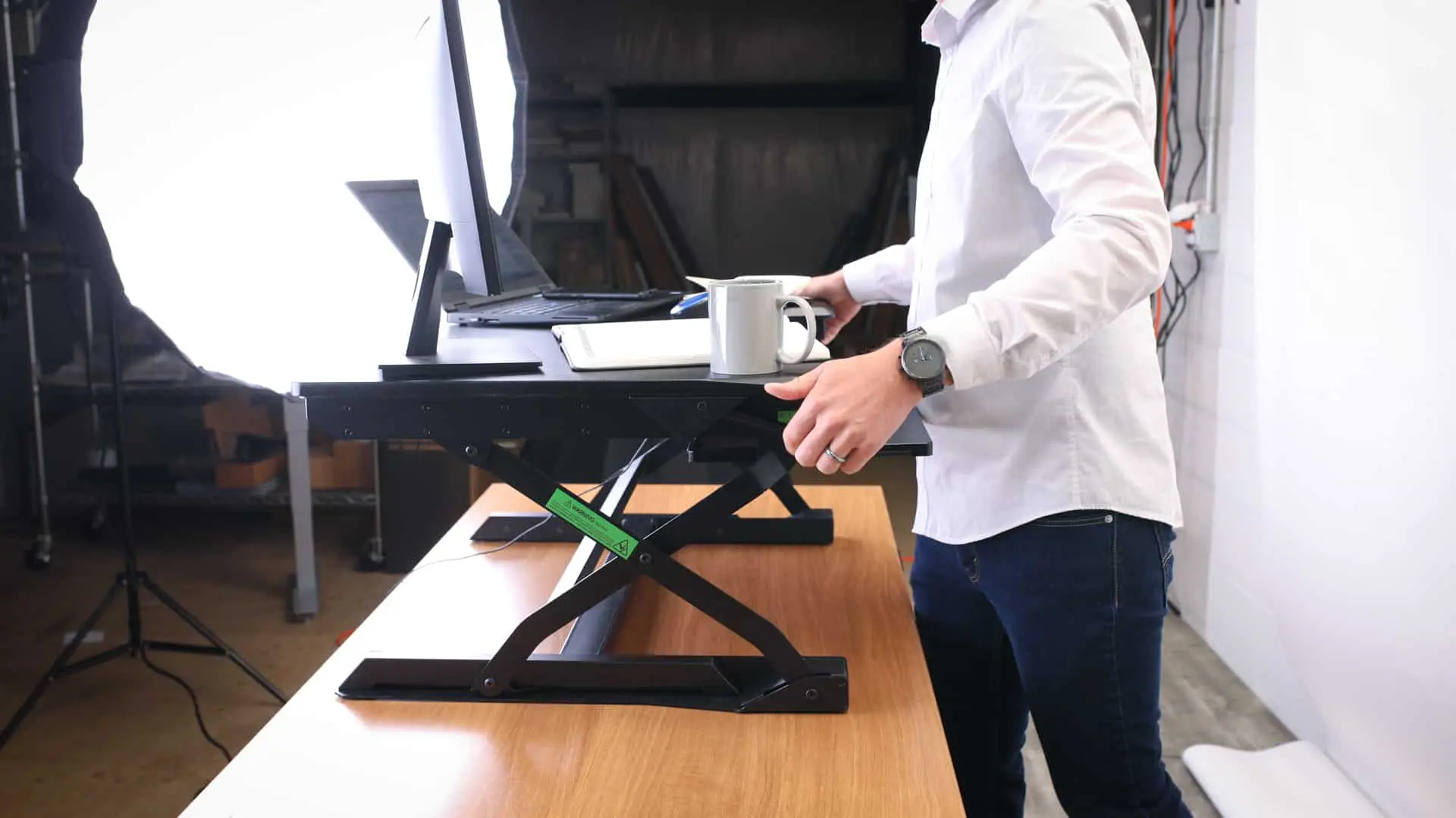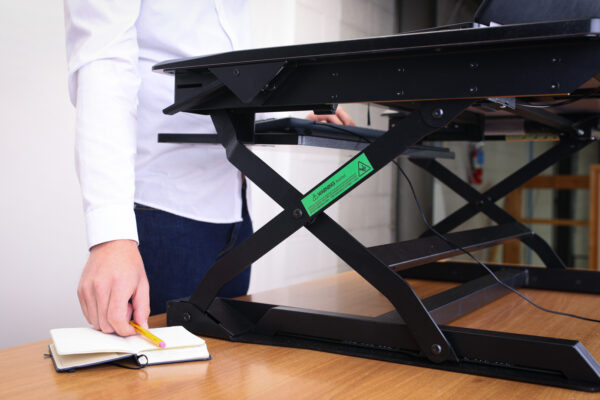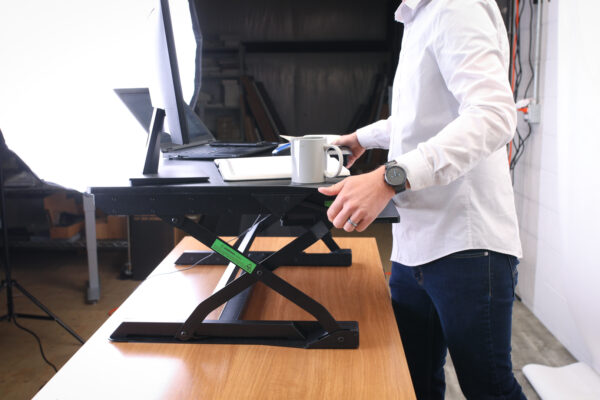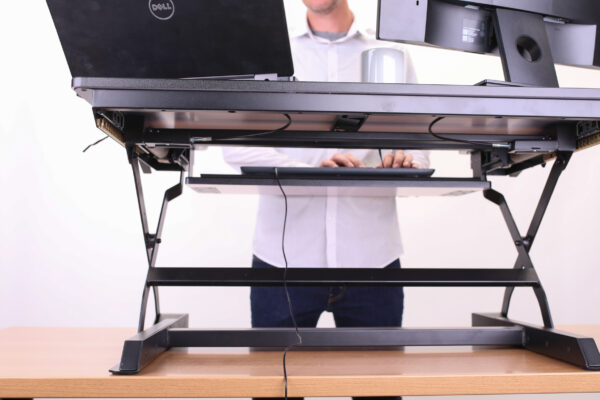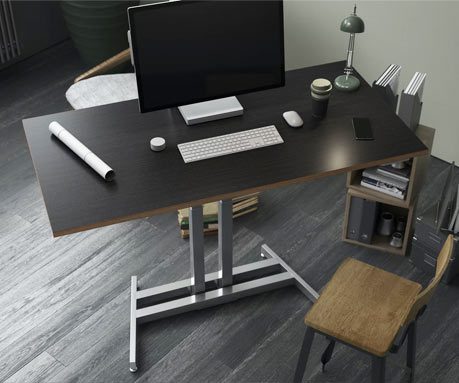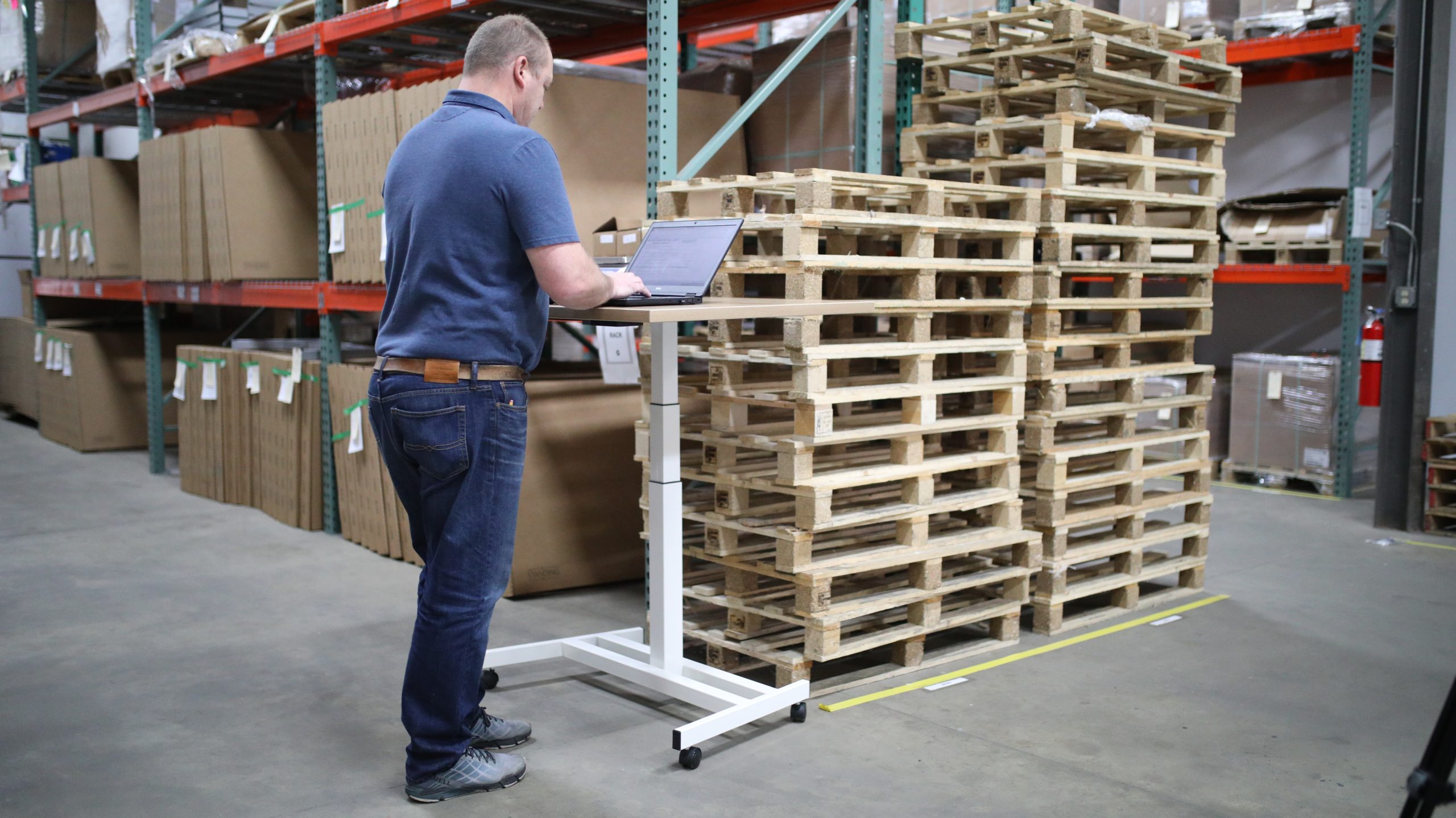So you want to take on the sit-stand lifestyle.
And you’re comparing the top two height-adjustable solutions: standing desk converters and height-adjustable desks. How do you choose between the two? At first glance, standing desk converters seem to be an easy fix — most models look quick to install, and they sit right on top of your desk, so you don’t have to switch the entire thing out, for one.
But there are 3 reasons you may want to reconsider.

Real quick… what is a standing desk converter?
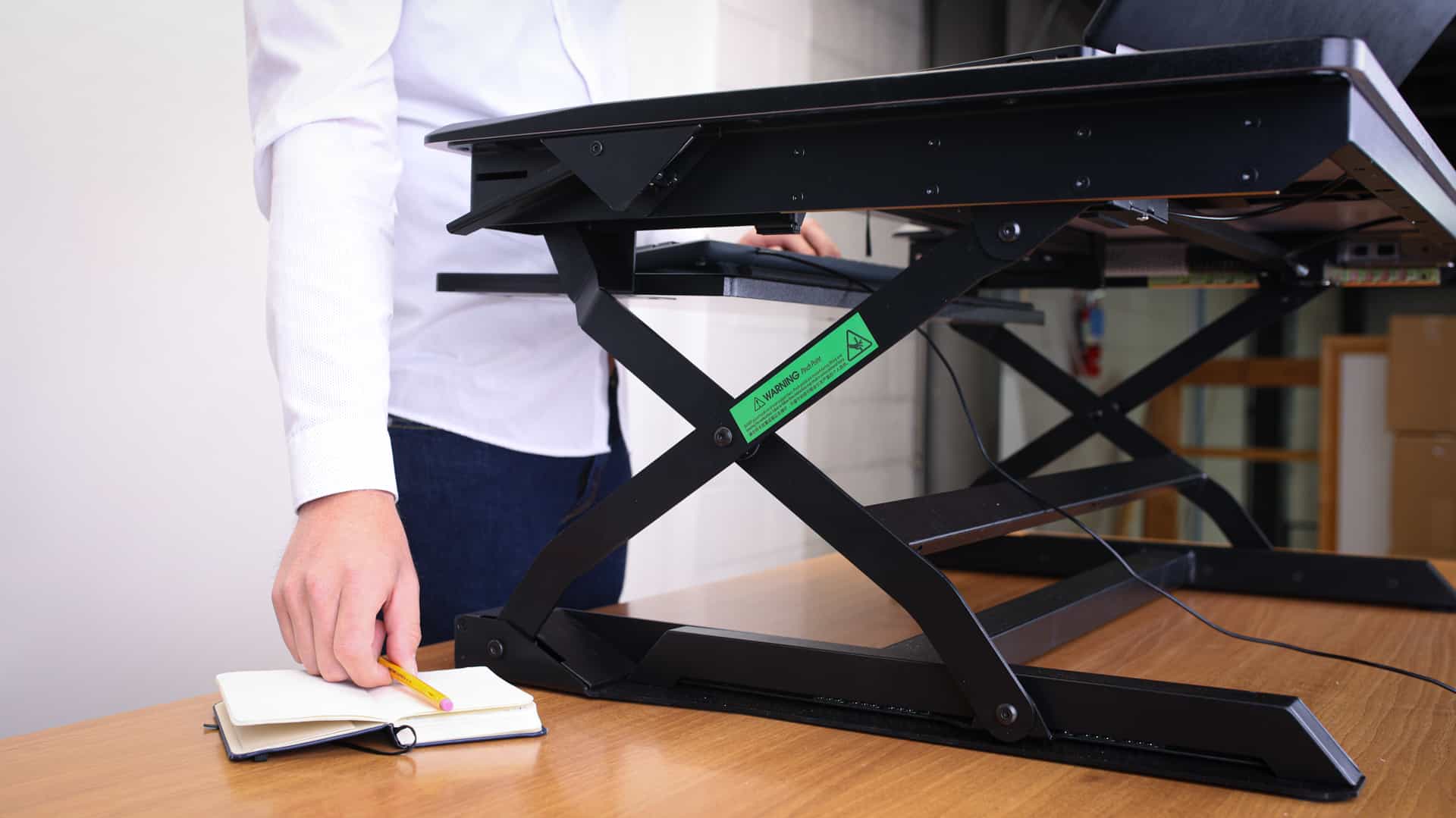
Standing desk converters are height-adjustable, multi-leveled mini-desks that sit atop your current desk, allowing you to move between sitting and standing and bring your tech with you. They average 30” x 20” and are electrically, pneumatically, or manually (hand-cranked) powered.
Different styles of stand up desk converters mount and move in different ways. The two popular mounting methods are freestanding (post and base) and hover (C-Clamp or grommet). Freestanding styles will move or ‘convert’ by one of two means: arcing outward into your workspace or lifting straight up — a Z-design or a crisscross design. Hover styles will typically afford 360° adjustability.
→ Standing desk converter; riser, sit-stand/standing/stand-up desk converter or riser, desk shelf/monitor or adjustable desk riser
1. Yes, they’re easy to install, but they’re a pain to use
Standing desk converters simply aren’t conducive to flow. Here’s why.
Multiple levels and weird dimensions make it difficult to set up your tech on a standing desk converter
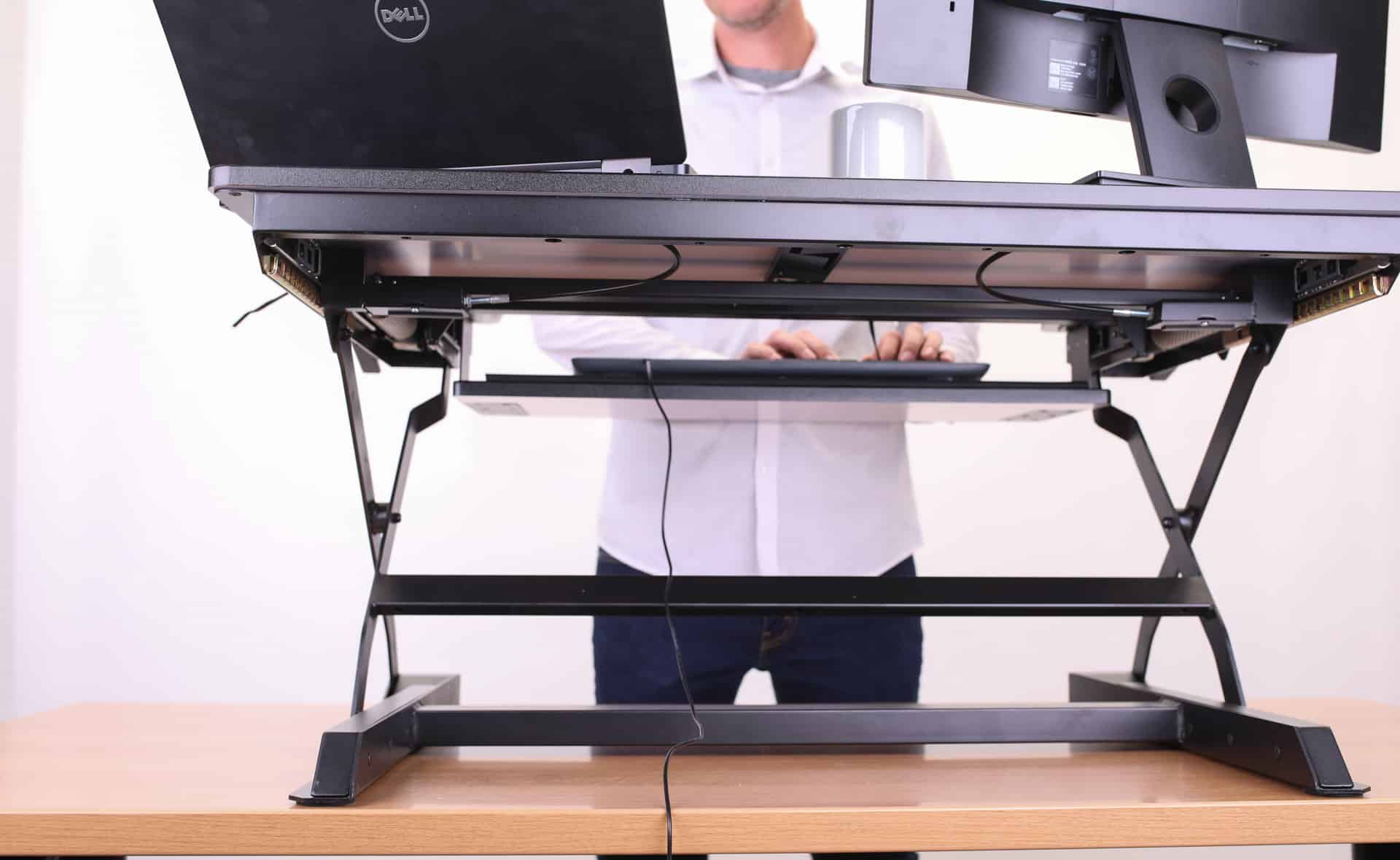
Many standing desk converters wrap the upper monitor level around the lower keyboard level. With this design, you may not have enough room to move the mouse without bumping into side supports. If you use a wide keyboard, the keyboard level may not be big enough to hold both keyboard and mouse. Best-case scenario, your mousing movement will be restricted. Worst-case scenario, you won’t even be able to fit your mouse on the lower level.
At the same time, the upper monitor level is usually too small to hold both tech and papers. If you alternate between typing and writing, you may find the multi-level design of a converter irritating because, when you want to write, you’ll have to bend over and use your original desktop. The small size of this upper monitor level also means there sometimes isn’t enough room for a second monitor mount. And the supporting beams on many standing desk converter designs prevent you from clipping a monitor arm to the level’s back edge. So in some cases, you won’t be able to get that dual-screen function.
To add to the difficulty: most stand up desk converters have the keyboard level sitting a fixed distance below the monitor level. The monitor level is adjustable, but you can’t independently adjust the keyboard level. This design makes it unlikely that you’ll achieve ergonomic heights for both your keyboard and monitor.
Standing desk converters are unstable at lower heights and have a shaky keyboard tray
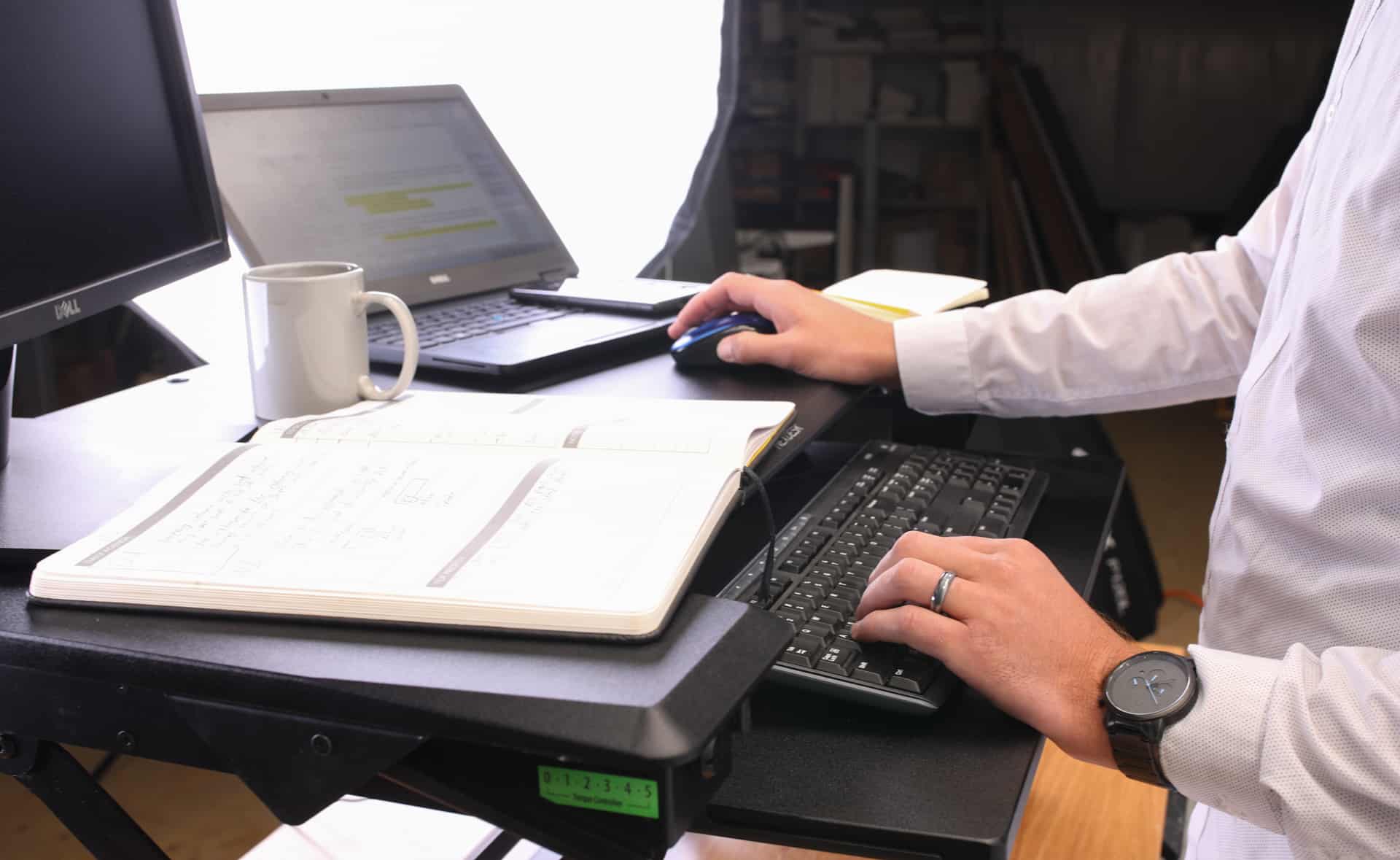
Even with the best standing desk converter, stability is a problem. Their keyboard trays are notoriously shaky, and — on Z-designs, specifically — the whole unit is often unstable at lower heights. If you are someone who needs sturdiness, be careful to check out all customer reviews because a poorly designed converter is liable to drive you up the wall.
When using a standing desk converter, you have to leave behind half your tech and 70% of your work surface every time you stand
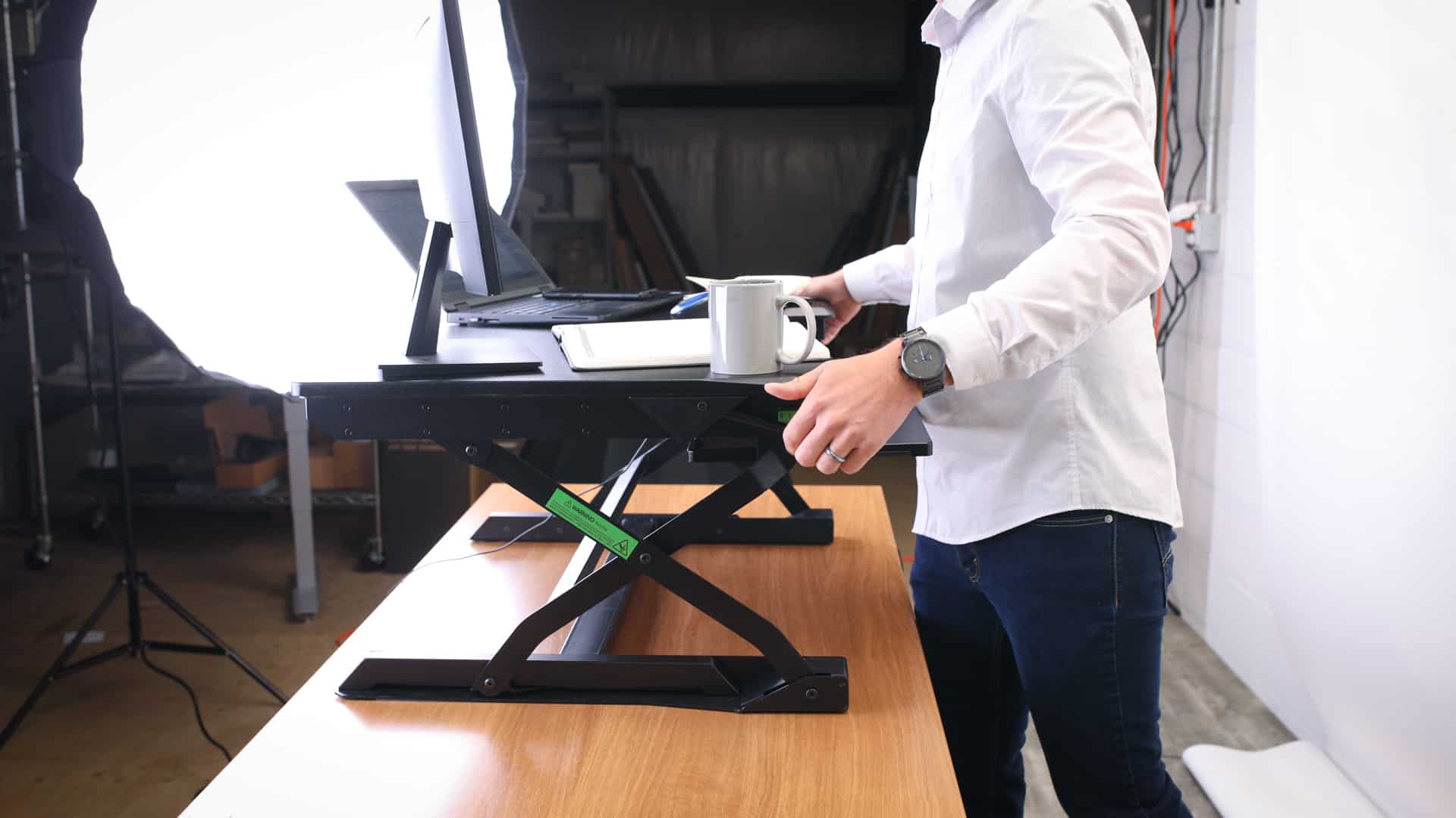
Take a look at your desk right now. What tools do you have on it? How much space does each one take up? How often do you use each one?
Now try to visualize all your stuff set up on the average sit-stand desk converter (30” x 20”). What doesn’t fit? Your second monitor? Your laptop riser? Perhaps your desktop fan?
Consider that every time you switch postures with a standing desk converter, you’re leaving these guys behind. That, and about 70% of your work surface. You also will have to decide what tools come and what ones don’t every time you stand up, which creates quite an insidious form of decision fatigue.
Standing desk converters are difficult to adjust
You have to grab hold of both the right edge and lever with your right hand and the left edge with your left hand as you raise or lower the stand up desk converter. The adjustment is especially difficult with a wide converter. And though electric standing desk converters fix this ‘awkward adjustment’ problem, they create a new one by design: an electric bill.
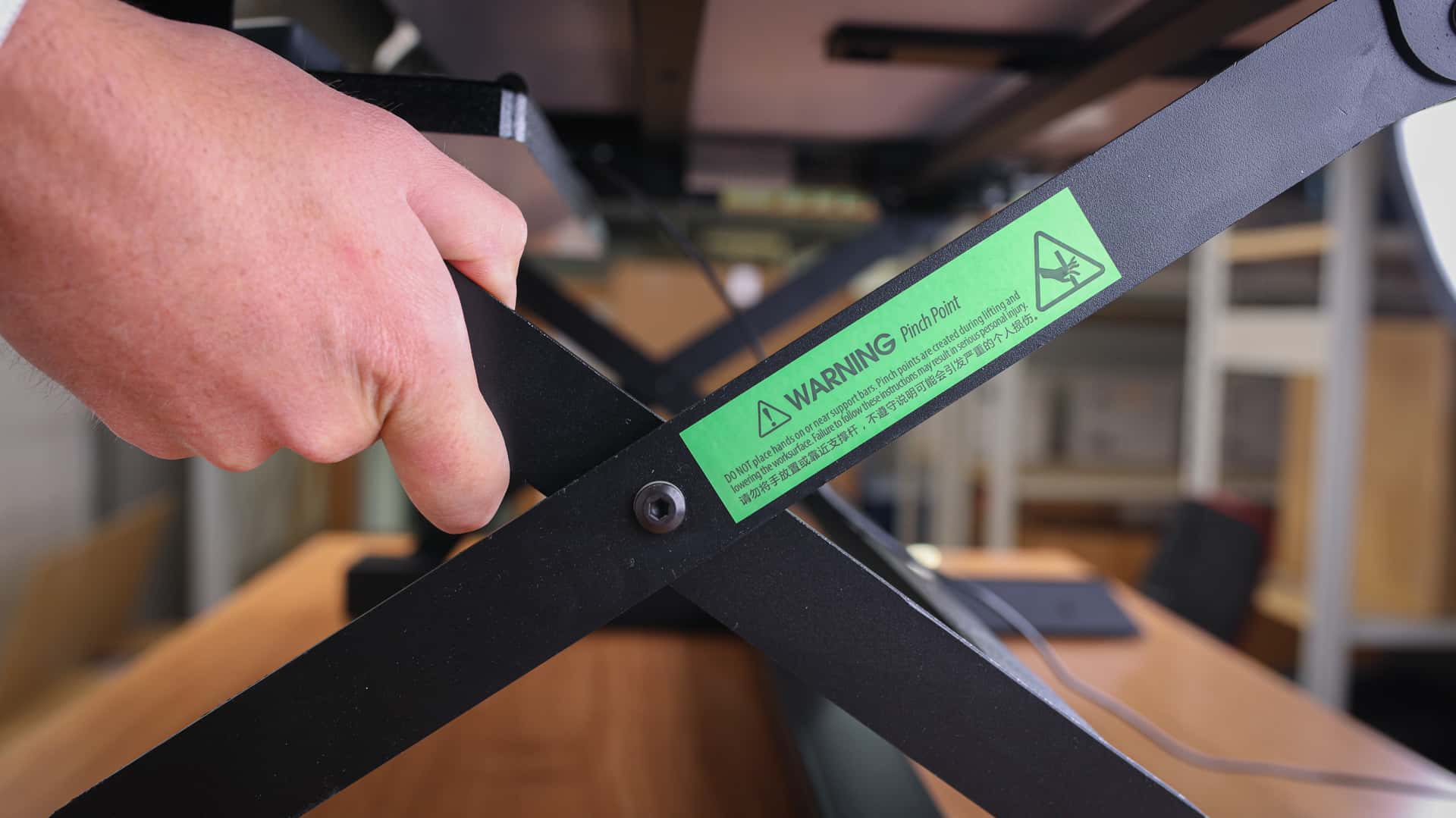
Also… just look at all those pinch points on the supporting beams of your basic sit-stand desk converter. Both your fingers and your wires are at risk of getting pinched every time you adjust the thing!
Ideally, you want a height-adjustable product that moves in rhythm with you — not one that introduces a hurdle to changing postures.
2. They’re portable but ugly
Standing desk converters weigh about 30 lbs, so they qualify as a portable solution. If you work in a multi-use type of environment, a sit stand converter can really serve through this versatility.
Unfortunately, though, most sit stand desk converter manufacturers aren’t design-minded — they are function-minded. So there aren’t many on the market that look good. Just run an Amazon search on the top products available.
Also, without integrated wire management, standing desk converters introduce cable clutter. Because a converter sits in the center of your desk, they let your wires hang down and travel across the entirety of your desktop. The wire mess litters your space.
3. Perfect ergonomics actually isn’t possible with a standing desk converter
When standing, you have to ‘hunch’ to work on your original desktop
Because adjustable standing desk converters divide your tech between two different levels, they fracture the flow between computer work and paperwork. This obviously affects your productivity and overall enjoyment of work, but it also introduces two ergonomic cardinal sins: 1. Not having all your tools within arm’s reach (i.e., the ‘clearance principle) and 2. Being forced to work in an uncomfortable, hunched posture (i.e., the ‘neutral posture’ principle).
You can’t achieve the optimal distance between your eyes and the screen
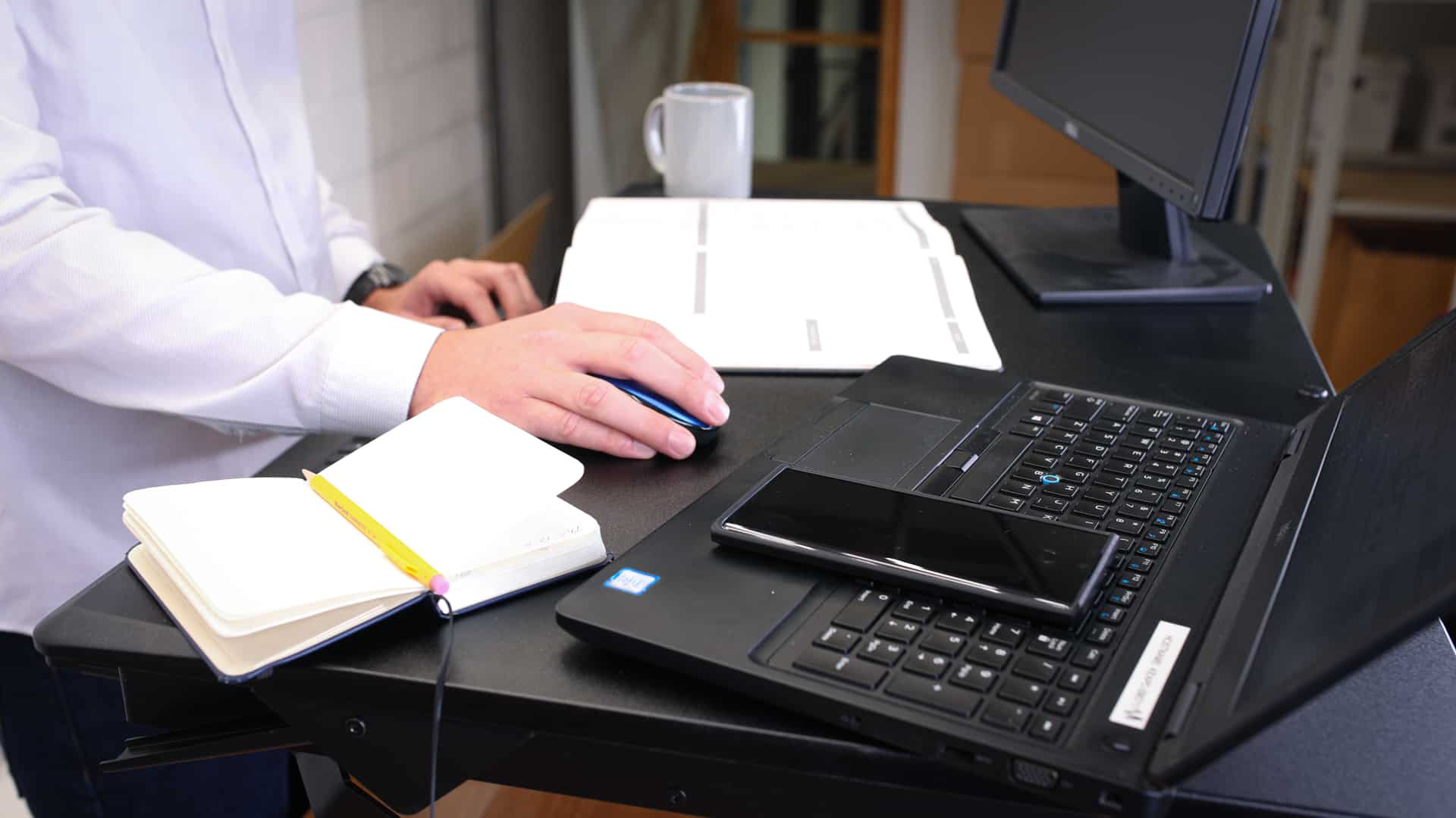
On the Z-design converter style, for instance, the product arcs up into your workspace, closing this distance. And it can’t be made up by moving the monitor backward in most cases because a standing desk converter’s upper level is typically narrow.
Standing desk converters create bad sitting ergonomics, full stop
A stand up desk converter doesn’t lay flat when closed, so it elevates your tech by a few inches. The ‘lift’ messes up the ergonomics of your setup when you work in a sitting position.
You might not find your sweet spot with a standing desk converter because its adjustability is limited
With any ergonomic tech, adjustability is critical for comfort. Yes, hover styles typically offer 360° adjustability, but you can only set most pneumatic and hand-cranked converters at 1 of 10 or so points on a range. Because you can’t fix them at any height, you may not actually be able to find your sweet spot with it in terms of height. So though standing desk converters seem to be the obvious solution if you want to try out the sit-stand lifestyle, you aren’t getting a real taste of it because you aren’t able to achieve optimal ergonomics with them.
Height-adjustable pneumatic desks offer more benefits than standing desk converters…at about the same price

A pneumatic desk allows you to flow ergonomically between typing and writing, sit to stand
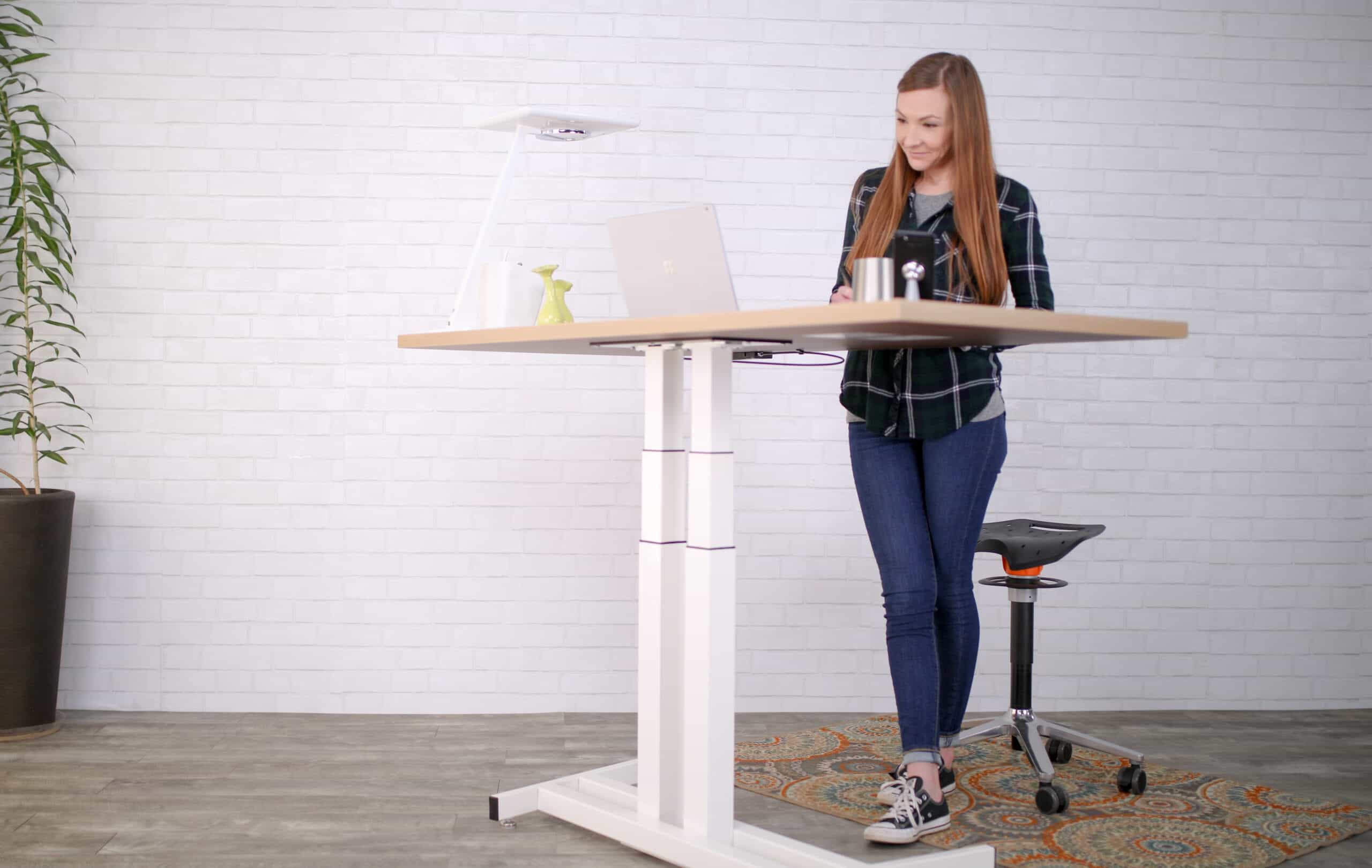

When you use a pneumatic desk, your entire workspace comes with you when you change positions. With your full desk available to you at all times, you have maximum real estate to set all your tech up however is optimal — you don’t have to divide it awkwardly between levels. And you don’t have to hunch over to write.
To adjust a pneumatic desk, you hold down the desk’s handle and lift it up or down to the right height. It’s as natural and easy as sitting down or standing up. And you can set it at any point on its range. While you have to settle for ‘good enough’ with a converter (fixing it at 1 of 10 preset positions), finding your unique sweet spot with a pneumatic is actually possible. It allows ergonomic flow in a fine form.
A well-designed pneumatic desk looks pretty damn good — minimal, compact, and customizable
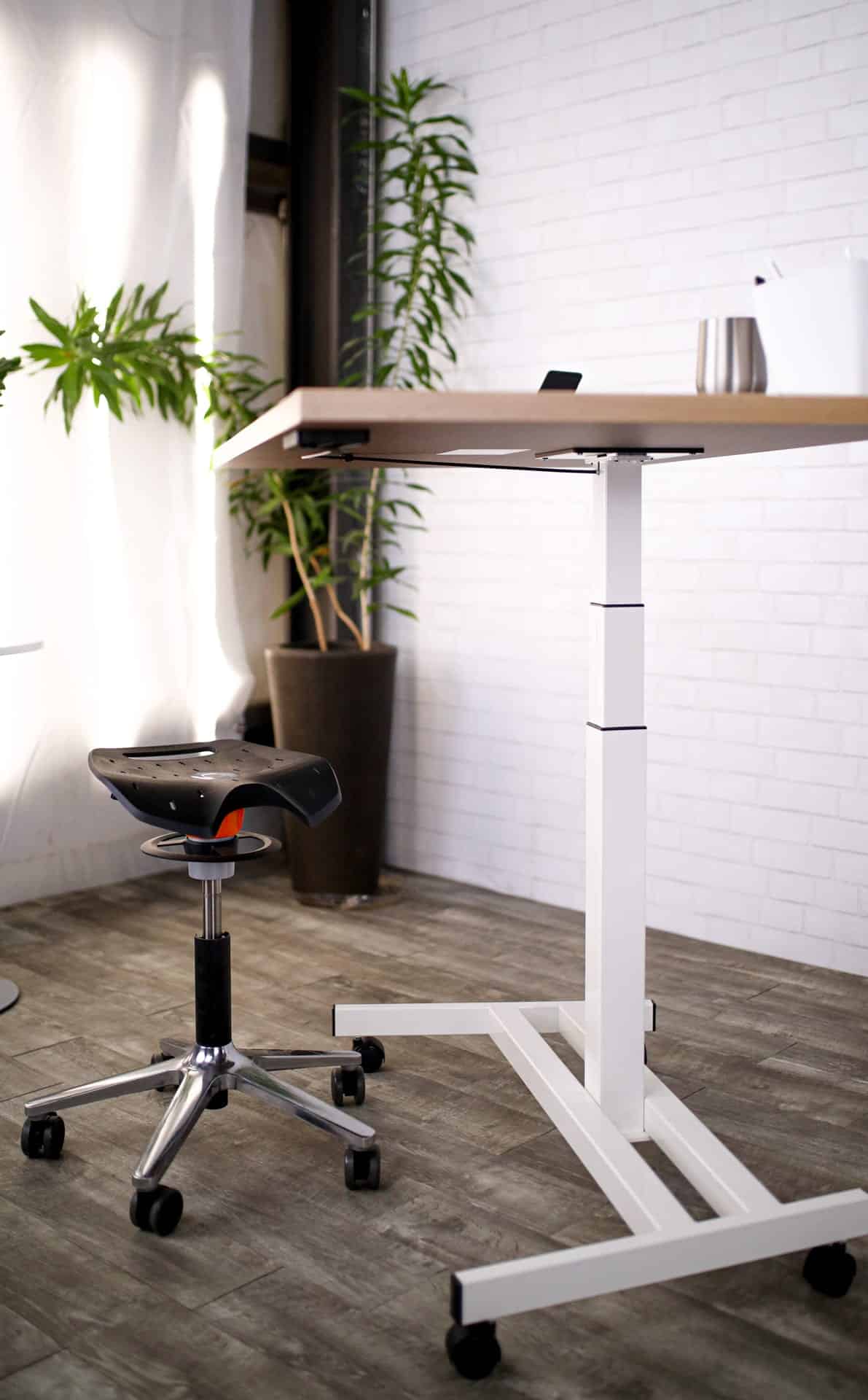
The Lüften and Ändern desk are model pneumatic desks. Both desks were designed in Germany, where European furniture makers have been perfecting the craft for hundreds of years. Their commercial-grade Swiss steel legs guarantee a 30+ year lifetime. You can pick from an array of classic finishes for the tabletop and neutral colors for the base — the versatile aesthetic will satisfy through each of these 30+ years. In some cases, you can even keep your current desktop and just install our Swiss steel pneumatic legs onto it.
Oh, and they install in 10 minutes or less.
A pneumatic desk is also one of the easiest ways to start standing
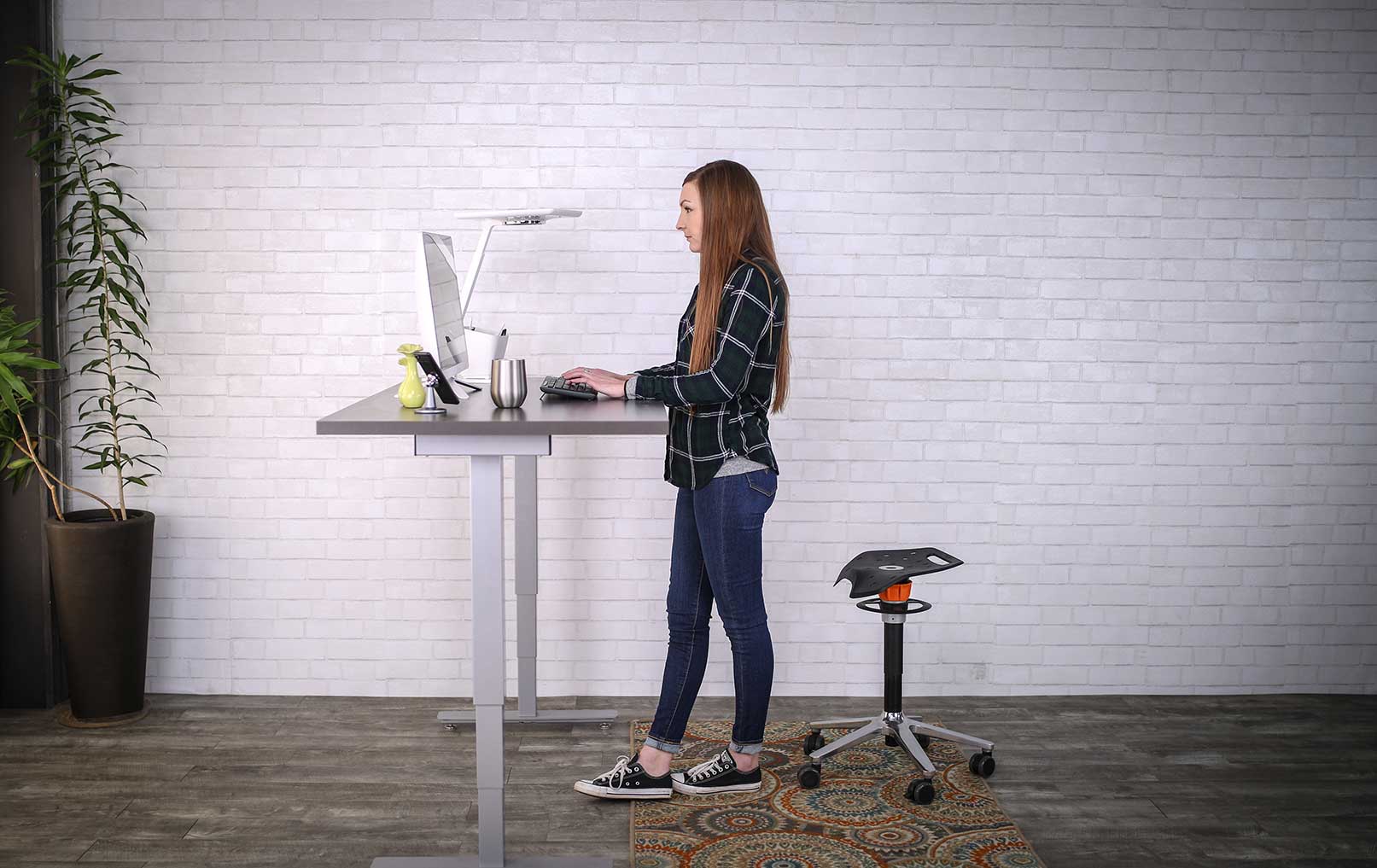
People tend to pick a standing desk converter because they see it as the easiest way to start standing. We argue that a pneumatic desk is even easier. It moves at pace with you. Its 3-second adjustment makes shifting postures natural. Because you can quickly return to sitting as needed, a pneumatic allows you to build the muscles to stand, gradually, rather than wear yourself out and return to the chair, defeated.
And because you don’t have to divide your tech between two different levels, setting it up is a simple matter of taking your current setup and giving it ‘lift.’ Within 20 minutes, you’ll be experiencing the real deal: sit-stand flow that’s ergonomic at all heights.

